I’ve had a fascination with the Sony Minidisc for more than 20 years. I never understood why it never really took off here in the states — it represented the ideal way to digitally record your world. Over the years, I’ve used mine to record live concerts, to jot guitar ideas, get clean audio for dive productions, record hours of meeting material and lately, make it possible to take streaming services offline. I’ll be writing more about the Minidisc and its advantages in a later post.
This one is about how I was able to repurpose an old Minidisc car stereo into a player that could be used at home.
A little history: back in 2001, I was rocking a 1996 Honda Civic hatchback. It was a strict stock CX, with a five-speed manual (man, I loved that little car that my kids nicknamed “Silver”…it was always more fun to say “Hi, Ho, Silver…Away!” than “get in the miniva…” When I purchased the car, it came without a stereo. Back then, you could buy a car with just a plastic faceplate where the stereo would go; it had all the wiring needed to put your own in. Being in the early stages of the family thing, money was tight and I knew I could install an aftermarket stereo much more economically than the offerings from the manufacturer.
After five years with a cassette player stereo, and having gotten into the minidisc game with a home deck and portable recorder, I decided to swap out the cassette for a minidisc. I found a Sony MDX-C150 (a very early car AM/FM/minidisc deck with a detachable faceplate and ability to connect to a CD changer) on eBay for a good price, which kept the tunes a-flowing right up until I sold the Civic in 2005 to a dear friend. As he wasn’t a minidisc guy, I put the cassette player back in and kept the C150 when it sold.
The deck sat on a shelf in the garage for the next 15 years. One day, I got to thinking — what if I found a way to put that deck back to work? I ordered a 12-volt/5-amp AC adapter from Amazon, pulled some old stereo speaker out of the closet, and found that I could still get it to play. A fun experiment, but then I put it all away to focus on other things.
Then, thanks to the lousy February weather in these parts, I decided to pull it all out again and try to do something a little more useful with it. This is more “step two” in what will hopefully result in a more permanent mounting of the unit — let me walk you through it.
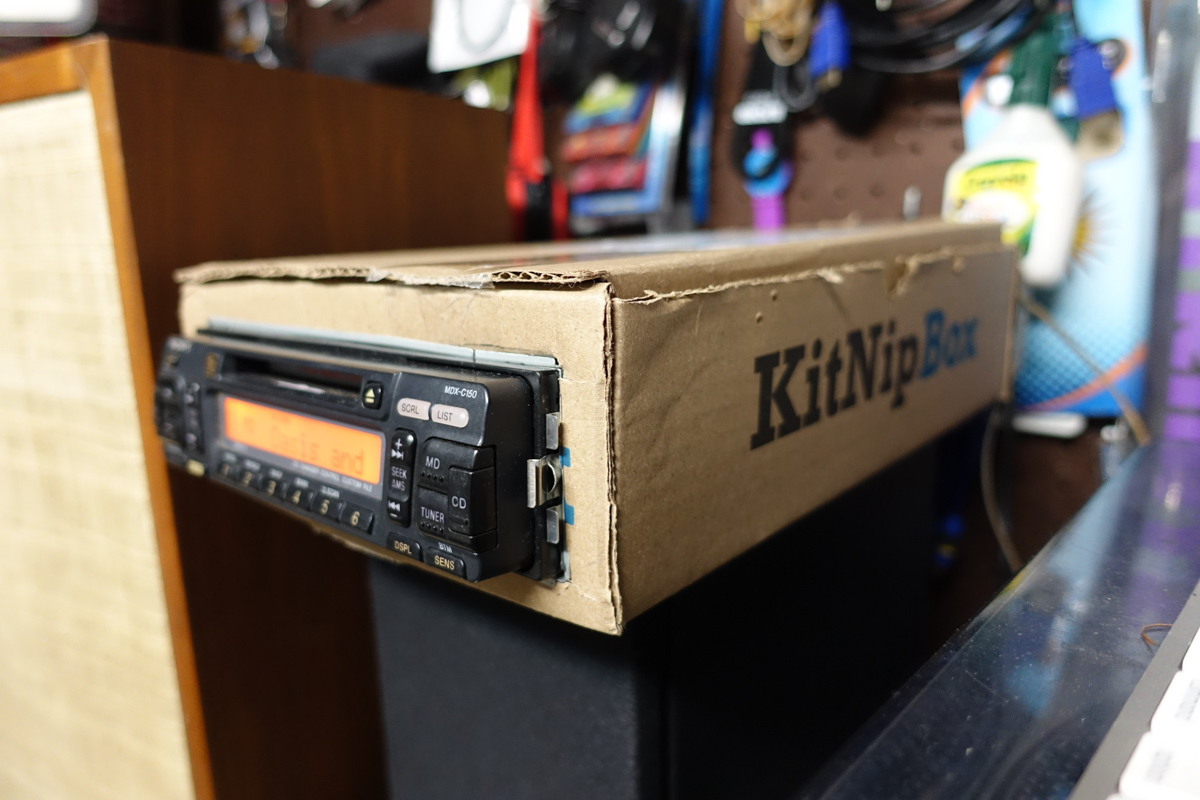 I took a cardboard box with a full lid — happened to be from a KitNip Box, a monthly subscription that brings catnip toys to my two kittens — that would make the perfect test bed. I traced the outline of the metal mounting sled of the C150 and cut an opening in one end of the box. I slid the sled in (it fits rather snugly) then inserted the deck itself. It was stable and made it easy to carry around.
I took a cardboard box with a full lid — happened to be from a KitNip Box, a monthly subscription that brings catnip toys to my two kittens — that would make the perfect test bed. I traced the outline of the metal mounting sled of the C150 and cut an opening in one end of the box. I slid the sled in (it fits rather snugly) then inserted the deck itself. It was stable and made it easy to carry around.
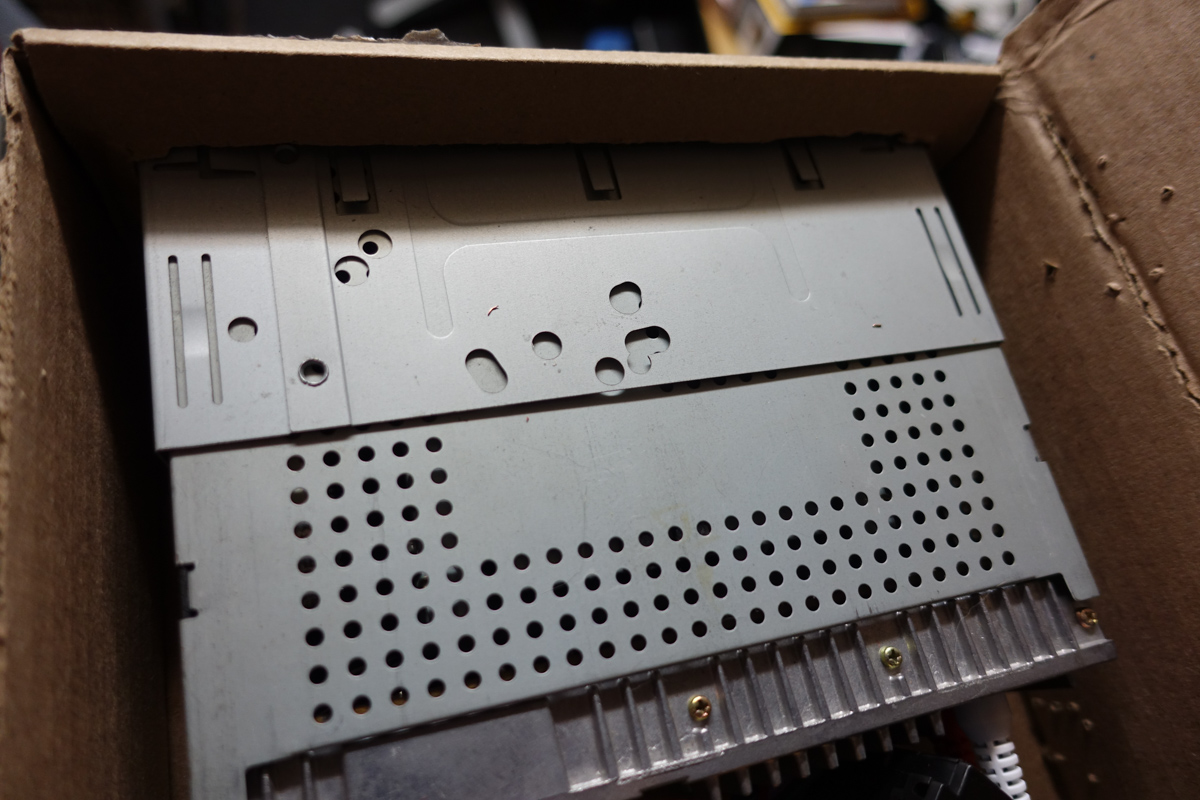
I then began to wire things up. I took the ground wire (the black one) and attached it to the sleeve of the adapter with electrical tape. I wound the two positive wires (on this deck, yellow and red) together and inserted them into the pin area of the adapter. There’s a “power select” switch on the bottom of the deck that needed to be switched to off; has to do with the accessory position on the car ignition switch, which we didn’t have; this way, power isn’t running to it at all times, but it would keep the time set.
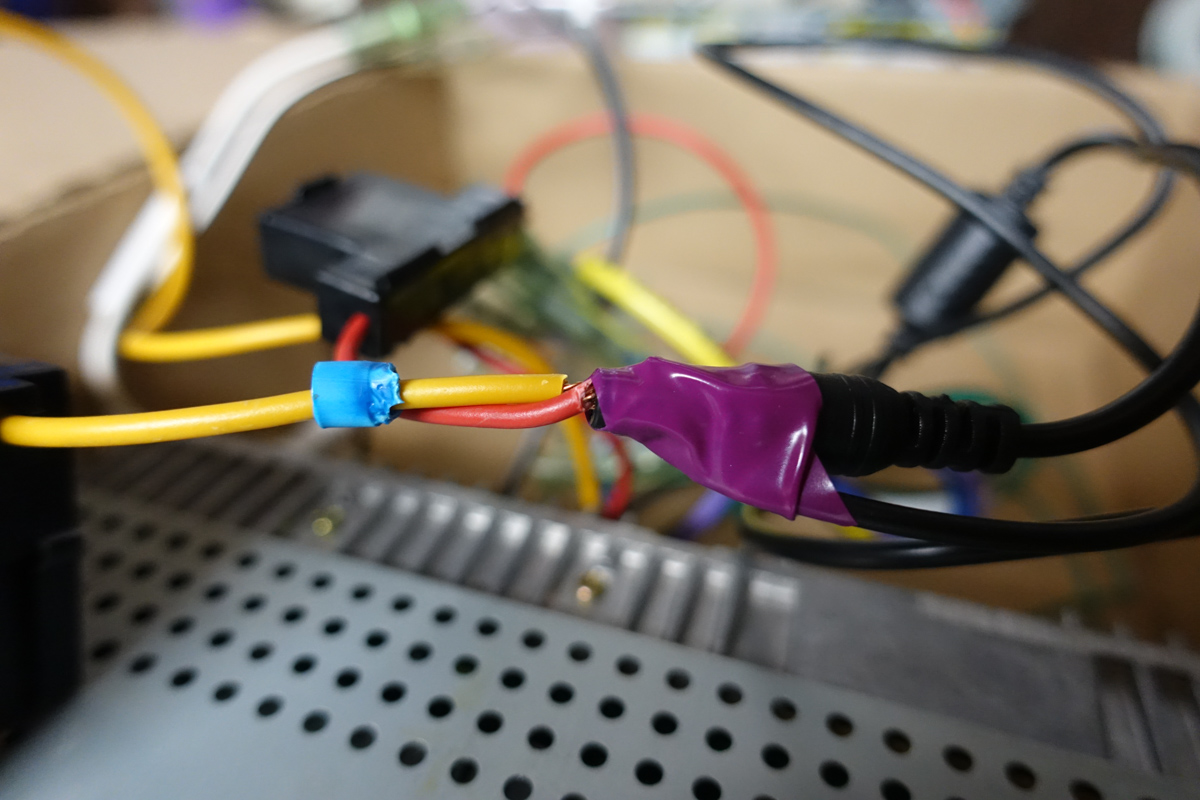
The first output I considered was to plug in powered speakers. To make this possible, I used a RCA to 1/8” female adapter and connected it to the line out of the deck. If this had been a car installation, that output would be used to connect to an external amplifier. I then connected an old set of Radio Shack powered speakers and fired everything up. It worked.
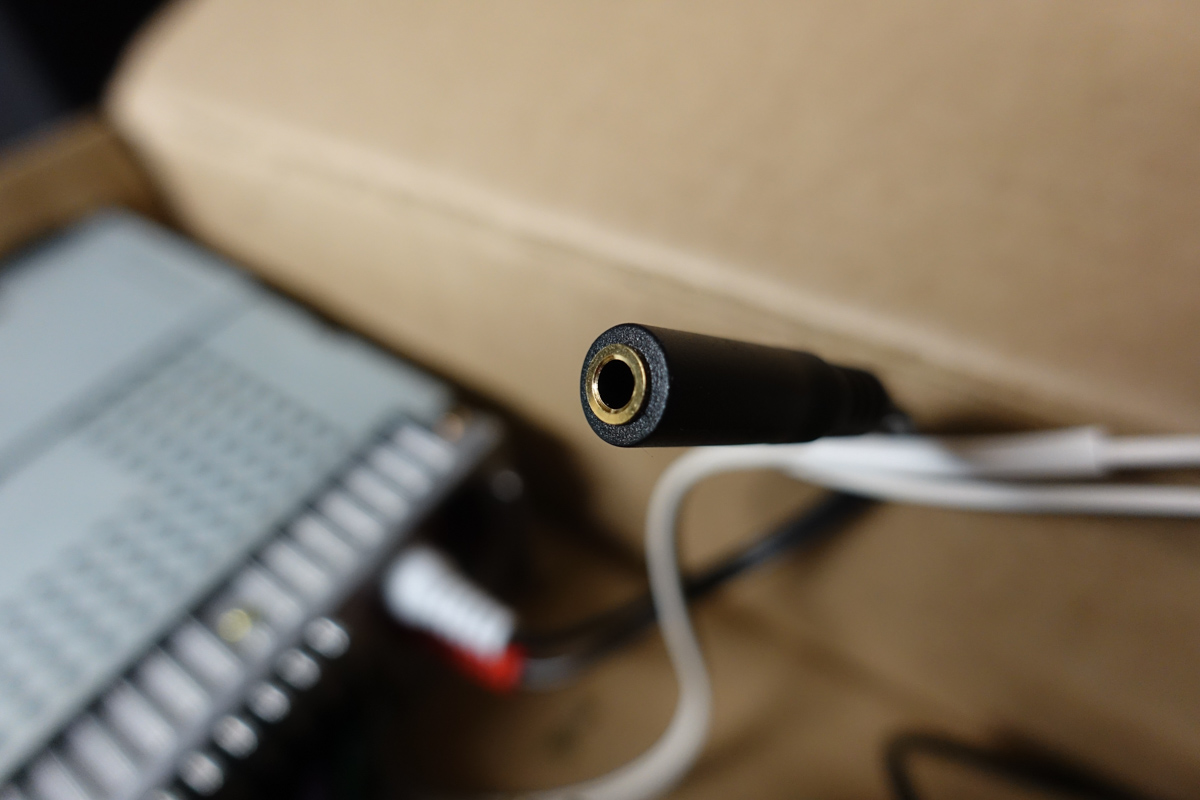
I also tried connecting the deck to a home stereo using a pair of RCA to RCA connectors into the line in on my receiver. Again, worked great.
The final piece was connecting speakers. I have a pair of Sony bookshelf speakers, which I was able to connect to the deck’s front channel left and right outputs. This set up sounded the best.
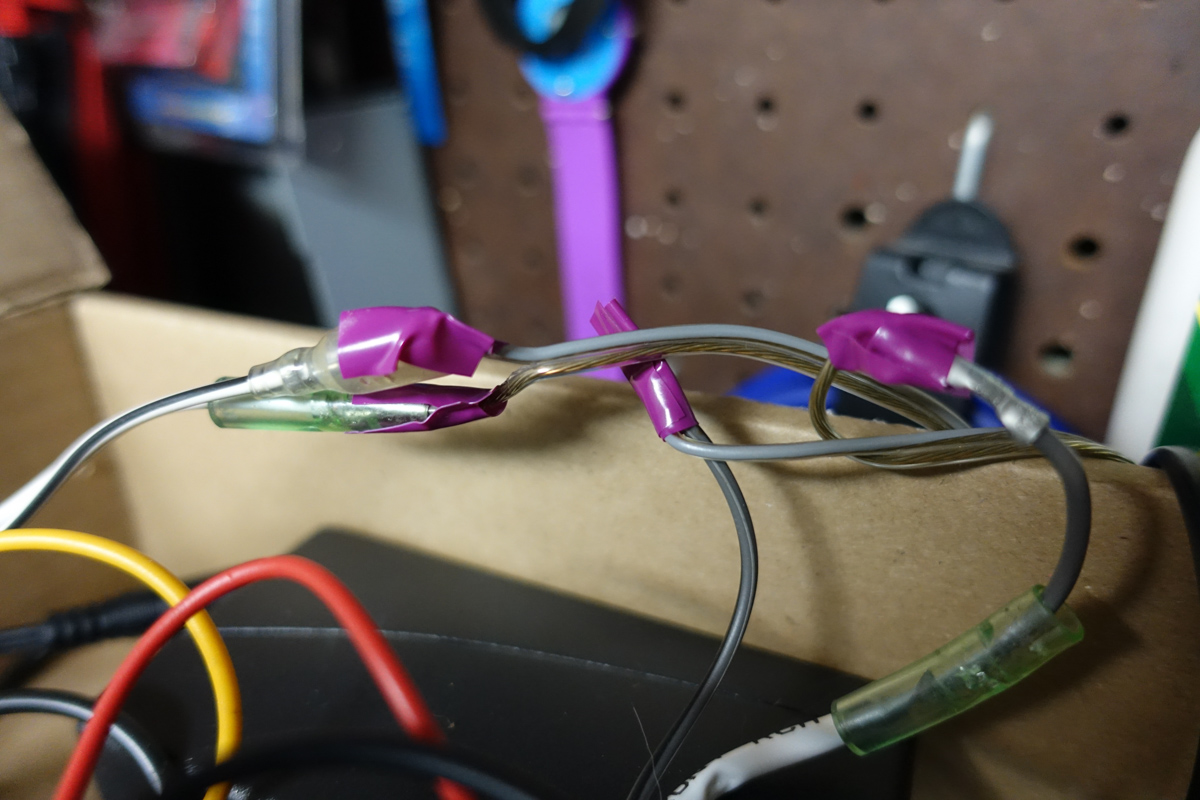 With each of these outputs, the volume control, bass/treble and balance could be controlled. The tuner works, too, but only the strongest stations came in, as I haven’t connected an antennae to it yet.
With each of these outputs, the volume control, bass/treble and balance could be controlled. The tuner works, too, but only the strongest stations came in, as I haven’t connected an antennae to it yet.
Now that I know this all works, I’m looking at options for a more permanent mounting solution. If I go this route, I’ll likely cut the end off the power adapter and wire the power/ground directly. I’m also considering a way to mount both the unit and speakers into a single cabinet, so I only need to plug it in to power for it to work.
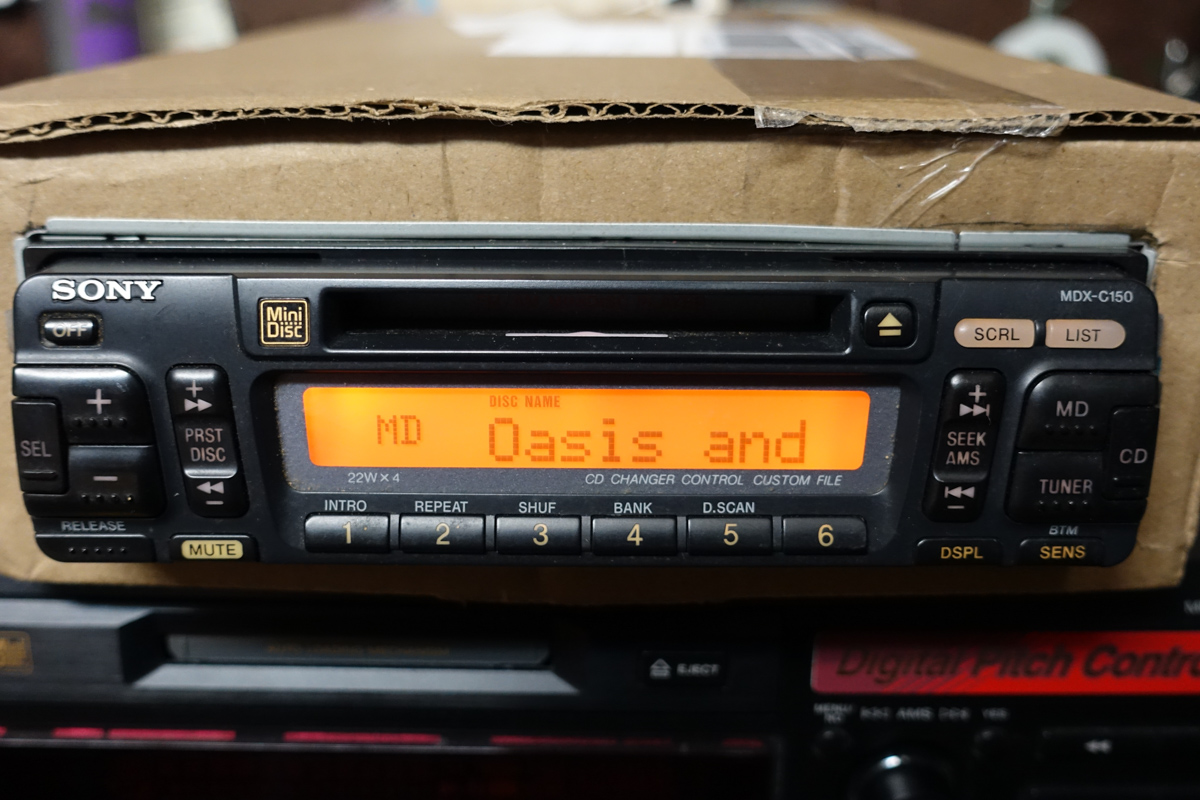
I’m really glad i did this. While I have plenty of ways to play back my minidiscs, this offers one more opportunity to ensure that I can keep using this great format. After nearly 30 years, this deck still works fine, and given that it was built to withstand the rigors of working in a moving car with constantly changing temperatures, I think this will keep going for some time to come.
Links:
MDX-C150 on Minidisc.org
MDX-C150 manual
MDX-C150 on eBay